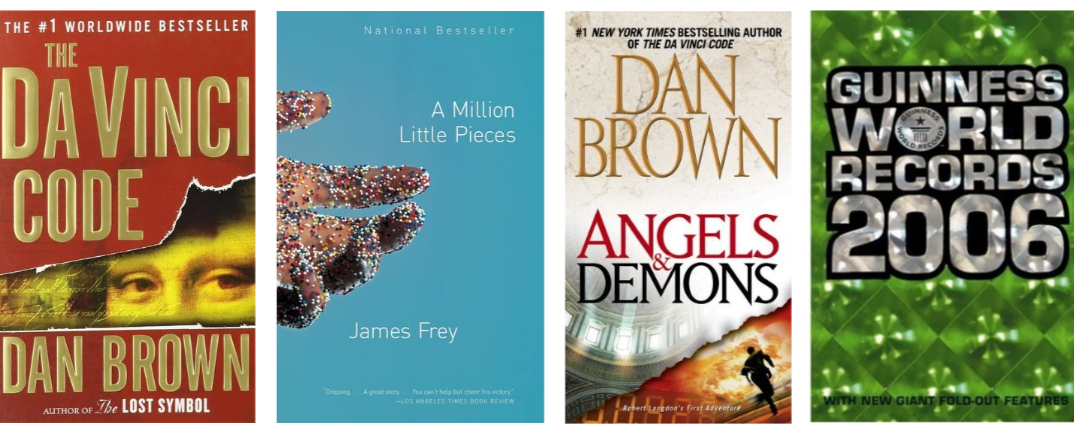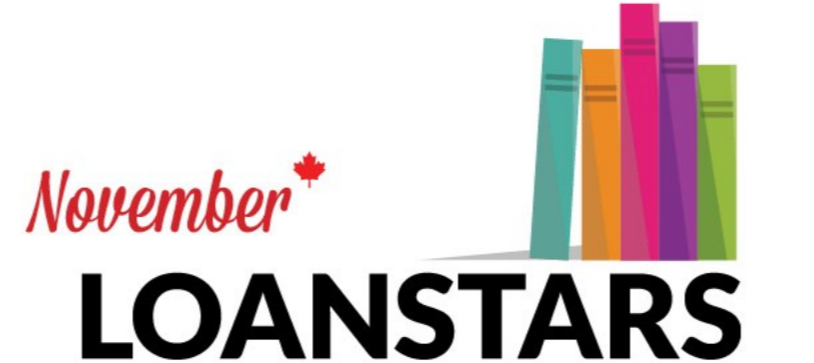This is the blog post you been waiting for — the final instalment in our mini-series on banned books.
So far, we’ve looked at the sales of banned books in Canada, Canadians' interest in banned books, and the way that publishers identify banned books in their book metadata keywords.
This time around, we’re going to focus in on the library circulation of these titles across Canadian libraries. Are Canadians borrowing these controversial titles?
About the data
In this blog series, we’re identifying books that are banned or controversial using the keywords that book publishers include in their ONIX book metadata. Like we explored in the first blog post in this series, there are nearly 2,000 ISBNs and 614 unique titles or book series that are identified as banned or challenged in their metadata keywords.
From this list, we identified the top 10 individual books and top 10 book series:
Individual titles
Lady Chatterley's Lover by D. H. Lawrence
The Adventures of Huckleberry Finn by Mark Twain
The Great Gatsby by F. Scott Fitzgerald
Ulysses by James Joyce
A Farewell to Arms by Ernest Hemingway
The Handmaid's Tale by Margaret Atwood 🍁
Brave New World by Aldous Huxley
For Whom the Bell Tolls by Ernest Hemingway
Animal Farm by George Orwell
I Know Why the Caged Bird Sings by Maya Angelou
Series titles
House of Night series by P. C. Cast and Kristin Cast
The Sandman series by Neil Gaiman
A Wrinkle in Time series by Madeleine L'Engle
Jasmine Toguchi series by Debbi Michiko Florence
Scary Stories to Tell in the Dark series by Alvin Schwartz
Cilla Lee-Jenkins series by Susan Tan
Aristotle and Dante series by Benjamin Alire Saenz
The Chronicles of Narnia series by C. S. Lewis
Maus series by Art Spiegelman
The Luck Uglies series by Paul Durham
Like we saw in the second blog post in this series, these 20 books and book series had a wide range of original publication dates, ranging from 1884 to 2017. Interestingly, the top individual titles identified as banned or controversial had much earlier first publication dates than the top series titles. The graph below shows that these individual titles were first published in 1980s or earlier, while series titles were all published after 1950.
For this blog series, we’re using SalesData, our national sales tracking service for the Canadian English-language trade print book market, and LibraryData, our national Canadian library collection and circulation analysis tool, to gather data on the sales and library circulation for titles related to these 20 titles and series.
SalesData and LibraryData store ISBNs differently. While SalesData gathers data for each individual ISBN, LibraryData uses ISBN clusters. These ISBN clusters may contain any number of ISBNs related to one title or to a series of books.
To compare Canadian book sales and Canadian library circulation, the ISBNs related to each banned book or book series were taken first from LibraryData clusters. This same list of ISBNs was then used to gather data from SalesData.
Through LibraryData and SalesData, these 20 banned books and series numbered 648 ISBNs altogether:
The largest number of ISBNs related to a single banned book or series is 206 ISBNs.
The smallest number of ISBNs related to a single banned book or series is 5 ISBNs.
While each banned book or series had 32 related ISBNs on average, the median number of ISBNs was 19.
Now, onto the results!
Borrowing banned books
We tracked both the Canadian book holds and loans for these 20 books and book series week-by-week from the beginning of July 2020 to the end of June 2023. The graph below shows the total loans for all ISBNs in Canadian libraries reporting to LibraryData.
Altogether, loans of these banned books steadily increased 690% from July 2020 to June 2023, with the largest peaks from March 6-March 12, 2023 and April 17-April 23, 2023.
The total circulation of library loans in these Canadian libraries also increased steadily — 786% over this period. This can be for a number of reasons, but most likely due to the continued increasing number of Canadian libraries that report to LibraryData!
Library loans only tell part of this story. Since a library’s ability to circulate titles is limited by the number of copies it has in its collection, library holds, rather than library loans, can show a clearer picture of library book borrowers' interest in particular books. When we look at the library holds for these banned books below, we see that there is a sustained interest in placing these books on hold over time, with library holds for these banned books increasing 32% over this time period. At the same time, holds for all library books at these reporting libraries increased 62%.
Shown in the graph above, there was a dramatic 150% increase in holds for these banned books during the span of Jan. 17-Feb. 27, 2022, with other large peaks from Aug. 22-Sep. 4, 2022 and Nov. 14-Nov. 20, 2022.
The graphs below compares the loans and holds for single banned book titles, series banned book titles, and all banned book titles.
Over the entire time period, series banned book titles were loaned more frequently than single banned book titles — 62% of all banned book loans belonged to a series, while 38% were single titles. Interestingly, this is the opposite of what we discovered in our previous blog post about banned book sales in Canada, where single banned book titles outsold series banned book titles.
For library holds, series banned book titles were also placed on hold more frequently than single banned book titles — 58% of all banned book holds were series titles and 42% were single titles.
The next graphs look more closely at the differences between the loans and holds for single titles and series titles.
The graph above shows the loans for single titles during this time period. Here, loans increased 494% from July 2020 to June 2023. The biggest peaks in loans were Feb. 13-Feb. 19, 2023 and April 17-April 30, 2023.
The holds for single titles offer a different trend, shown in the graph below.
Overall, total holds for single titles decreased 5%, with the lowest point from Dec. 27-Jan. 2, 2022. The highest peaks for holds for single banned book titles were at the beginning and end of this time period from Aug. 17-Aug. 23, 2020 and Feb. 27-March 5, 2023.
The loans for series titles over this period are shown in the graph above. Overall, series titles also saw an increase in loans from July 2020 to June 2023 — 903%. The biggest peaks in loans were March 6-March 19, 2023 and April 17-April 23, 2023.
The holds for series titles shows a similar interest in these banned book titles, shown in the graph below.
Over the entire time period, holds for series titles increased 125%. If we look at the graph above more closely, there is a sharp 284% increase in holds between Jan. 17-Feb. 20, 2022. After this increase, the number of holds for series titles decreases 58% until the end of the time period, with other peaks at Aug. 22-Aug. 28, 2022 and Nov. 14-Nov. 20, 2022.
And that’s a wrap on banned books!
Interested in learning more about Canadian sales and library circulation trends? Keep your eyes peeled on our blog and sign up for the research newsletter to be the first to know about all our upcoming research!























The latest news out of the European Commission.